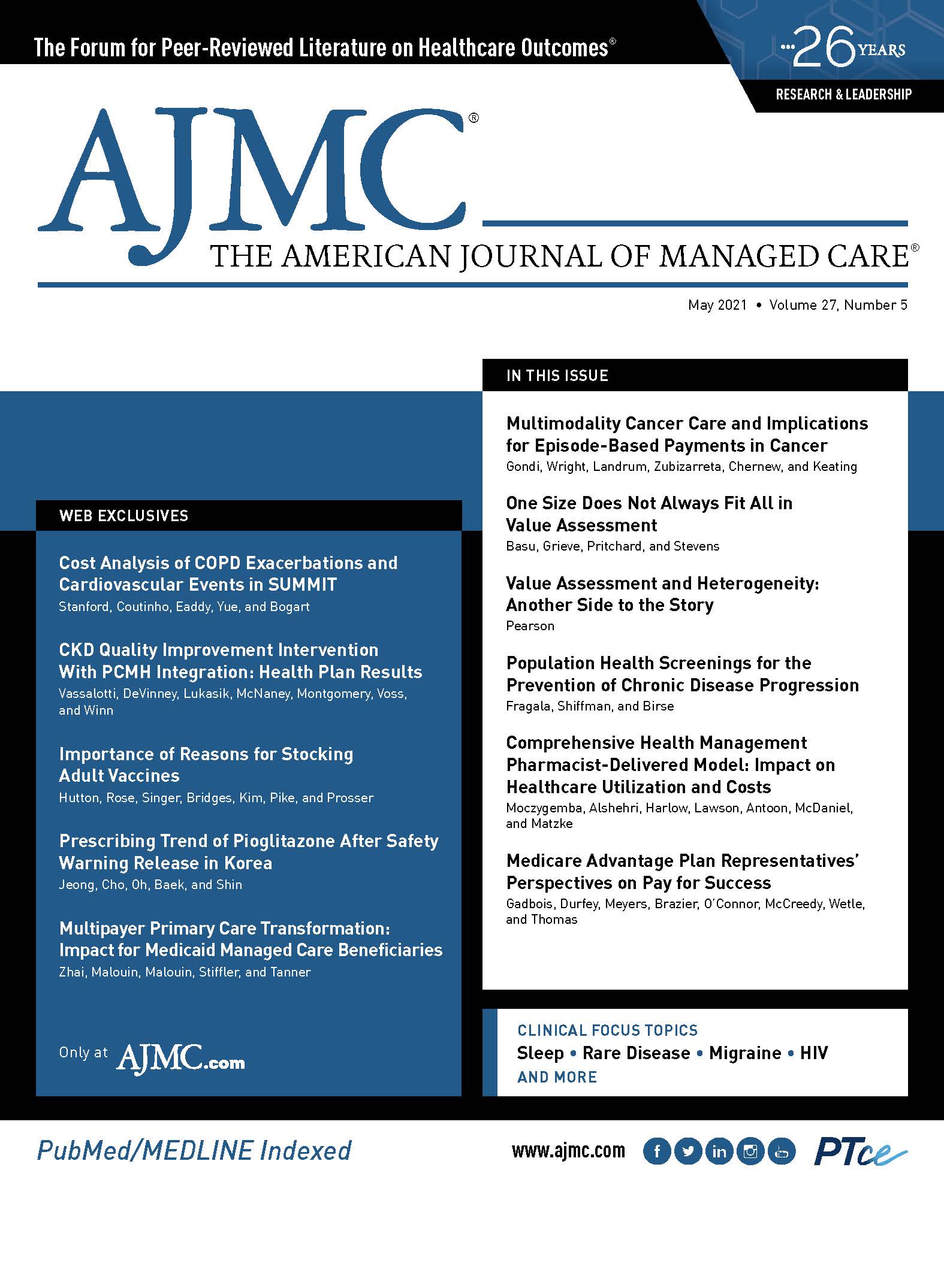Publication
Article
The American Journal of Managed Care
From the Editorial Board: Hoangmai Pham, MD, MPH
Author(s):
When my children were small, we spent hours watching the CGI series Walking With Dinosaurs. There was something soulful about nature’s repetitive morality tale through the eons—animals live to live. Their conflicts in physical combat, against natural elements and their own faulty genes, were raw manifestations of survival instinct. But evolution is the slow walk that happens between scuffles in the jungle. It tends toward the incremental unless some shock so dramatically changes the environment that survival depends on large phenotypic differences between animals. The asteroid strike 66 million years ago was such a shock, a sudden and extreme shuffling of evolutionary hierarchy among species.
Coronavirus disease 2019 (COVID-19) and the current recession have severely stressed the country’s care delivery system but not yet amounted to an asteroid strike. Progress toward a more value-based orientation had suffered the constant drag of much higher prices for talent and supplies and much higher overhead for the physical plants in America than in other wealthy countries. Moreover, our investments have skewed toward the production of high-profit services and goods like invasive procedures or new drugs rather than foundational elements like public health or primary care.
Such a system was not sustainable in the current crisis. One study estimates that primary care practices will lose $15 billion. Another recent analysis predicts that 40% of rural hospitals may close. While the best-resourced hospital systems stand to make financial gains (in part with support from federal COVID-19 relief funds), others, especially safety-net systems with heavier reliance on Medicaid revenues, have suffered breathtaking losses and staffing reductions.
Yet indications are that the system will try to ride out current pressures and return to its incremental, evolutionary crawl—the equivalent of short-term fasting instead of permanently changing one’s diet. The system largely has not interpreted these shocks as harbingers of longer-term environmental changes and reasons for more robust adaptations.
If policy makers want to accelerate evolution toward more sustainable, high-value models of care delivery, they could set clear expectations for more dramatic breaks from current models. Imagine if Medicare and other large payers demanded a care model with 30% lower overhead and were willing to pay providers at 80% of today’s prices. Providers could walk away with a healthy 10% profit, much higher than many could achieve now. A leap that might have seemed fantastical a year ago seems less so now with Americans’ newfound acceptance of digital health tools and other advancements that make it possible to imagine lower-overhead modes of care delivery, such as hospital-level care at home for all but the most critical cases or “officeless” primary care. Policy makers can directly reduce prices for existing goods and services as well, through regulation and/or procompetitive policies. We also need more research to reassure us that new models can scale safely. But lack of certainty about potential harm shouldn’t prevent experimentation, because the long-term trajectory of harm from our current models is certain. Payers would likely need to cushion residual financial impacts to providers in the short term—it takes time and costs money to divest from real estate and equipment—but policy makers could reward early adopters with preferential prices to inject competition and momentum for change.
COVID-19 has revealed the lack of resilience in our care delivery system. The next crisis might well be “the big one.” Policy makers and providers would do well to plan adaptation rather than leaving it to chance in the jungle.


